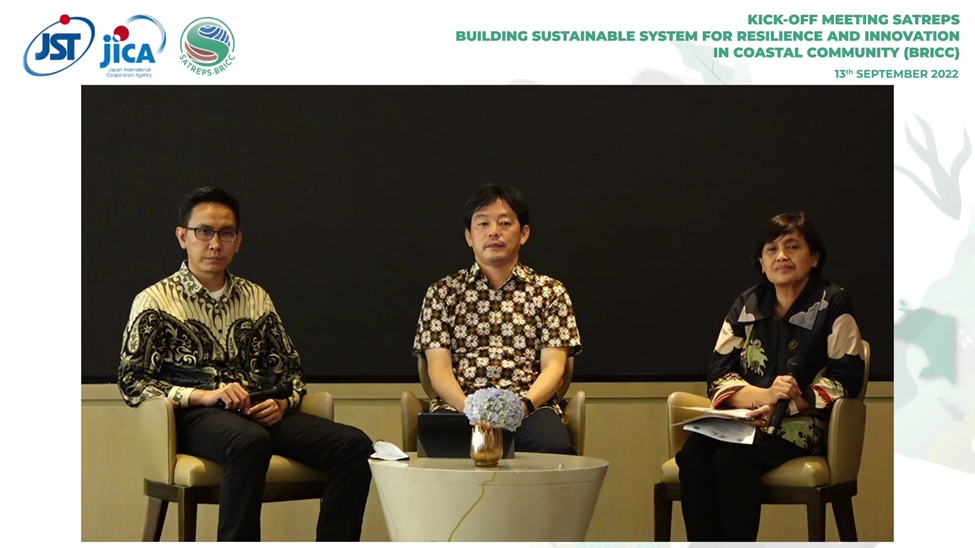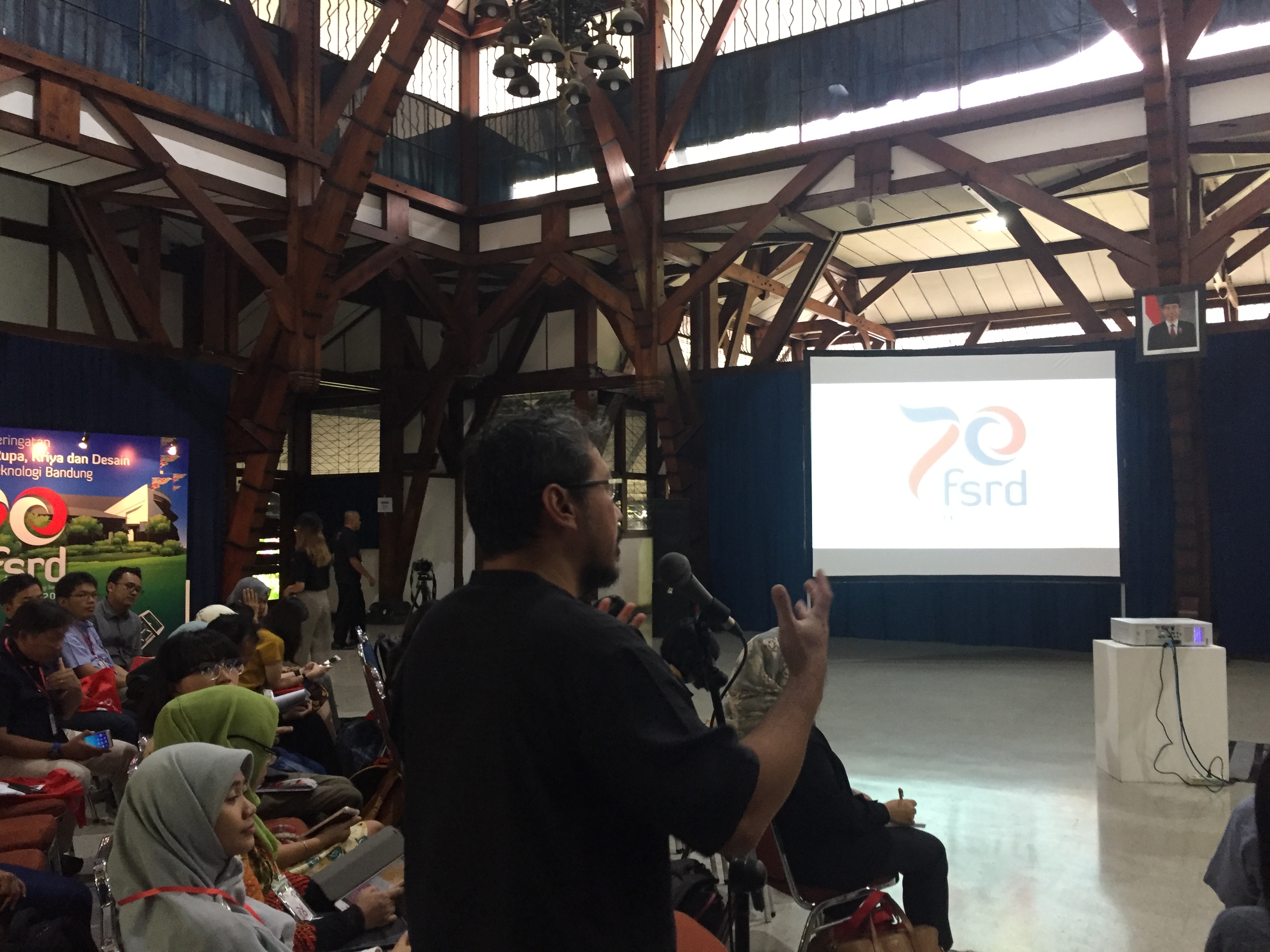Institut Teknologi Bandung and Kyoto University’s SATREPS Conference: Sustainable Systems for Resilient Coastal Communities
By Adi Permana
Editor Adi Permana

BANDUNG, itb.ac.id – ITB (Institut Teknologi Bandung) and KU (Kyoto University) held the SATREPS (Science and Technology Research Partnership for Sustainable Development) conference titled “BRICC: Building Sustainable System for Resilience and Innovation in Coastal Communities” on Tuesday (13/9/2022). This year’s SATREPS took on the hybrid concept, with participants being able to attend the meeting at Thamrin Pullman Hotel, Jakarta, or join the meeting online.
The SATREPS program is created by JST (Japan Science and Technology Agency) and JICA (Japan International Cooperation Agency) to tackle global issues with partnerships between researchers from Japan and developing countries like Indonesia.
Through JST, JICA, MOFA (Ministry of Foreign Affairs in Japan), and MEXT (Ministry of Education, Culture, Sports, Science and Technology, the government of Japan helps facilitate the studies conducted by Indonesia and Japan’s researchers. These research grants that go on for 3-5 years are often associated with worldwide dilemmas regarding the environment, energy supply and demand, bio-resources, disaster prevention and mitigation, as well as infectious disease control.
BRICC is one of SATREPS selected programs in 2021 with Mohammad Farid, Ph.D. from ITB Center of Coastal and Marine Development as the head of Indonesia’s research team and Prof. Nobuhito Mori from KU DPRI (Disaster Prevention Research Institute) as Japan’s head of the research team.
The research team from Indonesia worked together with several agencies and institutes. A few to be named are the following: NADC (National Agency for Disaster Countermeasure), PWPH (Ministry of Public Works and Public Housing of the Republic of Indonesia), UGM (Gajah Mada University), NRIA (National Research and Innovation Agency), USK (Syiah Kuala University), UI (University of Indonesia), MCGA (Meteorological, Climatological, and Geophysical Agency), MAF (Ministry of Marine Affairs and Fisheries), UNDIP (Diponegoro University), UNUD (Udayana University), UNPATTI (Pattimura University), ITK (Kalimantan Technological Institute) and HA (Ministry of Home Affairs). On the other hand, Japan’s research team collaborated with TU (Tohoku University), PARI (Port and Airport Research Institute), CU (Chuo University), and other universities and research institutions to be named.

The SATREPS BRICC meeting was attended by the Rector of ITB, Prof. Reini Wirahadikusumah. The Head of MCGA, Vice Deputy for Research and Innovation Facilities of NRIA, Deputy for Emergency Measures of NADC, and Head of the Disaster Management Task Force of PWPH were invited as well.

In this opportunity, Prof. Reini welcomed all the collaborative research between institutions from Indonesia and Japan. She stated that Indonesia has joined 22 research collaborations via SATREPS that were initiated since 2008. After ITB’s first collaboration with SATREPS in 2011, ITB has followed 6 more collaborative efforts for the last 11 years. This SATREPS BRICC program is the first one that carries the theme of disaster prevention and mitigation.
“We believe that the scope of ITB’s research is relevant and parallel to the objectives of this program, which is to raise the resilience of coastal regions based on the latest scientific studies regarding their optimization of monitoring instruments, modeling of area, and green infrastructure designs,” Prof Reini added. “All of these are hoped to contribute to the prevention of disaster, conservation of the environment, and continuity of the economy.”
The SATREPS BRICC program will ensue for 5 years, starting from 2022 to 2026. Prof. Reini believed that this program may bring many benefits to Indonesia, not only as the first step to a healthy partnership between Indonesia and Japan but also to build resilience in coastal communities.
Reporter: Adi Permana
Translator: Ruth Nathania (Environmental Engineering, 2019)

.jpg)
.png)
.jpg)
.jpg)
.jpg)

